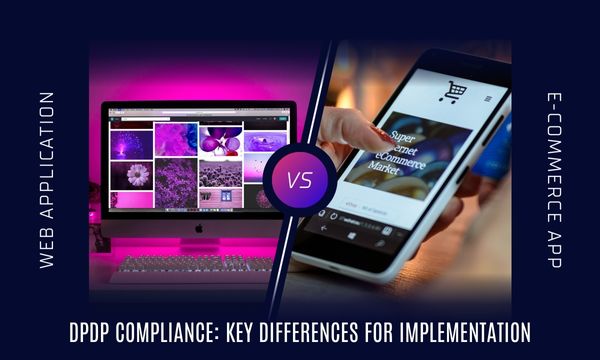
In today's highly interconnected world, the manufacturing sector stands at the forefront of technological innovation. However, this digital transformation brings with it an elevated risk of cyber threats. As manufacturing operations become increasingly dependent on complex IT systems, the potential impact of cyber attacks grows significantly.
Recent incidents in the industry highlight the pressing need for a robust cybersecurity strategy. From ransomware attacks that cripple production lines to data breaches that compromise sensitive intellectual property, the consequences of inadequate cybersecurity are profound and far-reaching. These events underscore the critical importance of a proactive and comprehensive approach to protecting manufacturing operations.
This blog delves into the essential precautions and preventive measures necessary for securing manufacturing environments. We will explore best practices for conducting audits, ensuring compliance with industry standards, managing risks, and preparing for incidents. By examining real-world attacks and their impacts, this guide aims to provide actionable insights and strategies to fortify your manufacturing organization against the evolving landscape of cyber threats.
Understanding and implementing these measures is not just about mitigating risks—it's about safeguarding the integrity and continuity of operations in an industry that drives global progress. Let’s explore the key strategies to enhance your cybersecurity posture and ensure your manufacturing processes remain resilient and secure.
1. Conduct Regular Cybersecurity Audits
Importance of Audits: Regular cybersecurity audits are vital for identifying vulnerabilities, assessing the effectiveness of existing controls, and ensuring compliance with industry standards. These audits help uncover potential weaknesses in your security posture before they can be exploited by attackers.
Key Steps:
* Schedule Regular Audits: Conduct comprehensive internal and external audits at least annually, or more frequently if there are significant changes to your IT infrastructure.
* Engage Third-Party Experts: Utilize independent cybersecurity firms to gain an objective assessment of your security measures and practices.
* Review and Update Policies: Ensure that your security policies and procedures are up-to-date with current threats and best practices.
Real-Life Example: In 2020, Steelcase, a major furniture manufacturer, suffered a ransomware attack that disrupted its operations. A thorough audit revealed that the attack exploited outdated security practices. Regular audits could have identified these gaps and potentially mitigated the impact.
2. Ensure Compliance with Industry Standards
Compliance Necessities: Compliance with industry standards and regulations not only helps protect against cyber threats but also demonstrates a commitment to maintaining high-security standards. Standards such as ISO 27001, NIST, and GDPR provide frameworks for robust cybersecurity practices.
Key Steps:
* Adopt Relevant Standards: Implement standards such as ISO 27001 for information security management or NIST for cybersecurity practices.
* Continuous Monitoring: Stay updated on regulatory changes and adjust your compliance strategies accordingly.
* Employee Training: Ensure that all employees are aware of and adhere to compliance requirements through regular training sessions.
Real-Life Example: The 2021 attack on Molson Coors, a leading beverage manufacturer, highlighted the need for stringent compliance measures. The attack disrupted operations, emphasizing the importance of aligning with industry standards to mitigate risks.
3. Implement Robust Risk Management Systems
Risk Management Fundamentals: Effective risk management is essential for identifying, assessing, and mitigating potential threats to your manufacturing operations. A well-structured risk management system helps prioritize security efforts based on the potential impact and likelihood of various risks.
Key Steps:
* Risk Assessment: Regularly conduct risk assessments to identify potential threats and vulnerabilities specific to your manufacturing environment.
* Risk Mitigation Strategies: Develop and implement strategies to address identified risks, such as enhancing network security, securing IoT devices, and ensuring data protection.
* Risk Monitoring: Continuously monitor and reassess risks to adapt to evolving threats and changing operational conditions.
Real-Life Example: The ransomware attack on JBS USA in 2021 underscored the importance of proactive risk management. The disruption to meat processing operations was a result of inadequate risk mitigation strategies, highlighting the need for comprehensive risk management systems.
4. Establish a Comprehensive Incident Response Plan
Incident Response Essentials: An effective incident response plan is crucial for minimizing the impact of cyber-attacks and ensuring a swift recovery. This plan outlines the steps to take when a security incident occurs, including how to detect, contain, and resolve the issue.
Key Steps:
* Develop an Incident Response Plan: Create a detailed plan that includes roles and responsibilities, communication protocols, and steps for containment and recovery.
* Conduct Regular Drills: Test your incident response plan through regular drills to ensure that your team is prepared for various types of attacks.
* Continuous Improvement: After an incident, review the response process and update the plan based on lessons learned to improve future responses.
Real-Life Example: In the 2023 ransomware attack on MKS Instruments, the lack of a well-defined incident response plan contributed to prolonged downtime and operational disruption. A robust plan could have expedited recovery and minimized impact.
5. Enhance Endpoint and Network Security
Endpoint and Network Protection: Securing endpoints and networks is fundamental to protecting your manufacturing environment from cyber threats. This involves implementing security measures to safeguard all devices and network connections within your organization.
Key Steps:
* Implement Endpoint Protection: Use advanced endpoint protection solutions to detect and block malicious activity on all devices connected to your network.
* Network Segmentation: Segment your network to limit the spread of attacks and reduce the risk of lateral movement within your systems.
* Regular Patch Management: Ensure that all software and systems are regularly updated with the latest security patches to address known vulnerabilities.
Real-Life Example: The 2022 attack on Denso, an automotive parts supplier, was facilitated by vulnerabilities in endpoint security. Strengthening endpoint protection and network security could have mitigated the attack's impact.
6. Secure Supply Chain and Third-Party Relationships
Supply Chain Security: Manufacturers often rely on a complex network of suppliers and partners, making supply chain security a critical aspect of overall cybersecurity. Ensuring the security of your supply chain helps prevent attacks that exploit third-party vulnerabilities.
Key Steps:
* Evaluate Third-Party Risks: Assess the cybersecurity practices of your suppliers and partners to ensure they meet your security standards.
* Implement Security Requirements: Establish security requirements for third parties and incorporate them into contracts and agreements.
* Monitor Supply Chain Security: Continuously monitor and evaluate the security of your supply chain to address emerging threats.
Real-Life Example: The 2020 attack on Visser Precision, an aerospace and defence supplier, demonstrated how breaches in the supply chain can affect downstream clients. Ensuring the security of third-party partners is crucial to safeguarding your entire network.
7. Promote Cybersecurity Awareness and Training
Employee Training: Employees are often the first line of defence against cyber threats. Regular training and awareness programs help ensure that all staff members understand cybersecurity best practices and are vigilant against potential threats.
Key Steps:
* Conduct Regular Training: Provide ongoing cybersecurity training for all employees to educate them about phishing, social engineering, and other common attack vectors.
* Promote Awareness: Foster a culture of cybersecurity awareness by sharing information about recent threats and best practices.
* Simulate Attacks: Use simulated phishing exercises and other training methods to test and improve employees' ability to recognize and respond to cyber threats.
Real-Life Example: The 2021 ransomware attack on Duvel, a Belgian beer firm, was partly attributed to inadequate employee training on phishing and social engineering. Regular training and awareness programs could have helped prevent the attack.
Conclusion
The evolving landscape of cyber threats in the manufacturing industry underscores the critical need for a comprehensive and proactive cybersecurity strategy. The recent spate of attacks reveals how vulnerable manufacturing operations can be to disruptions caused by ransomware, data breaches, and other malicious activities. The lessons learned from these incidents highlight the importance of robust security measures, including regular audits, strict adherence to industry standards, effective risk management, and well-prepared incident response plans.
Securing your manufacturing environment requires more than just implementing security technologies; it involves a strategic approach to continuously evolving your defences and fostering a culture of cybersecurity awareness. By taking decisive steps to enhance your cybersecurity posture, you protect not only your operations but also your reputation and bottom line.
Now is the time to act. Evaluate your current cybersecurity strategy, identify potential gaps, and make the necessary improvements to fortify your defences. Engage with cybersecurity experts to conduct thorough audits, ensure compliance with relevant standards, and develop a comprehensive incident response plan tailored to your needs. Prioritize training and awareness programs to empower your team with the knowledge to recognize and respond to threats effectively.
Don’t wait for the next attack to expose your vulnerabilities. Take proactive measures today to build a resilient manufacturing operation that can withstand the growing tide of cyber threats. Strengthening your cybersecurity strategy is not just an investment in technology; it's an investment in your organisation's future stability and success.



